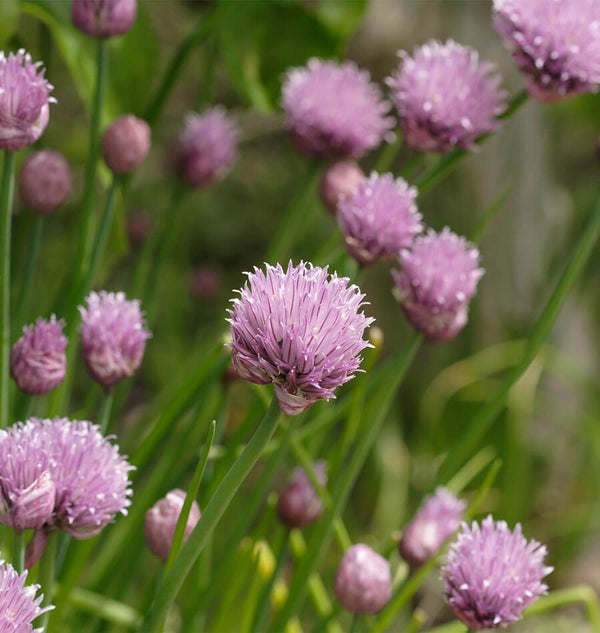Support Food Banks Canada with every dollar spent — 15% sales donated from Black Friday to Cyber Monday.
Time remaining:
Time remaining:

The theme of this Twenty-one Days of Green campaign is to encourage everyone to Commit to Grow just one item that might otherwise be purchased at a grocery store. We love using chives as a place to start. To produce...
Continue ReadingParsnip (Pastinaca sativa) As a member of the family Apiaciae, the parsnip counts among its close cousins the carrot, parsley, dill, fennel, cilantro, and celery. All of these bear tall umbels of flowers, but like the carrot, parsnip is biennial,...
Continue ReadingParsley (Petroselinum crispum) Both the curly leaf form (P. crispum) and the Italian flat-leaf form (P. crispum var. neapolitanum) of this useful herb are members of the carrot family Apiaceae, and share a close botanical relationship to their cousin the...
Continue ReadingLeeks (Allium ampeloprasum, var. porrum, syn. A. porrum) This member of the Allium family is thought to have been in cultivation since the 2nd century BC, from ancient Egypt to Mesopotamia. The Romans believed that eating leeks imparted a sonorous...
Continue ReadingCress (Lepidium sativum) & Watercress (Nasturtium officinale) Cress (sometimes called garden cress, garden pepper cress, pepperwort, or pepper grass) is a leafy annual herb from the Brassica family. It is harvested when immature, around one to two weeks after germination,...
Continue ReadingCatnip (Nepeta cataria) This perennial member of the mint family is native from eastern Europe eastward to China. It is a bushy, branching herb that grows to 50–100cm (20–39″) tall. Like many mints, its stems are square in cross section,...
Continue ReadingAbout Cauliflower (Brassica oleracea Botrytis group) Modern cauliflower has been grown since the 15th century, and it was grown almost exclusively in Italy until the 16th century when it gradually migrated to France and then to American gardens 100 years...
Continue ReadingCelery (Apium graveolens var. dulce) & Celeriac (A. graveolens var. rapaceum) The Latin names for the different types of celery are revealing. In both cases, graveolens means “strong smelling” or “heavily scented.” Dulce implies sweetness, while rapaceum means “turnip-like.” Few...
Continue ReadingChives (Allium schoenoprasum) Chives have been in cultivation since at least the Middle Ages in Europe, and there are references to their use in ancient Rome, but primarily as a medicinal herb. They were used to treat sunburn and sore...
Continue ReadingAsparagus (Asparagus officinalis) Asparagus has very few close botanical relatives in its own family, Asparagaceae. The name “asparagus” simply comes from the Latin botanical title, with its roots in Greek and the original Persian, asparag, meaning “shoots.” The asparagus we...
Continue ReadingAbout Arugula Arugula is a low-growing member of the Brassica family that forms rosettes that resemble a cross between lettuce and dandelions. Its leaves have deep, round indentations reminiscent of oak leaves. These, as well as the flowers and seed...
Continue ReadingBasil is a heat-loving annual plant grown for use as a culinary herb. Many varieties exist, with subtle differences in flavour, growth habit, leaf colour, and so on. All have a rich, pungent taste and scent reminiscent of anise and...
Continue ReadingWith careful planning, seeds can be sown from winter to autumn in order to keep the garden productive pretty much all year round. Here are some tips for seed sowing for the longest harvest window. Determined growers sometimes think of...
Continue ReadingMost fertilizers (and many soil amendments) show this formula somewhere prominently on the package: N-P-K. This shows the ratio of the three most important plant nutrients, Nitrogen, Phosphorus, and Potassium. Potassium gets a ‘K’ because of its name on the...
Continue ReadingTo lime, or not to lime? Most homeowners ponder this question at some point without understanding: 1. What is dolomite lime? Lime is an important alkaline source of calcium and magnesium for your lawn and garden, mainly composed of ground...
Continue ReadingSome winter crop protection to protect from cold, wind, and snow will certainly increase success for winter gardeners. We recommend the use of raised beds whenever possible, as they provide extra drainage, and will warm faster in brief winter sunny...
Continue ReadingPlanting a Bumblebee Garden by Brian Campbell Why garden for Bumble Bees? Bumblebees are a keystone species. This means much of our ecological system hinges on the survival of bumblebees. Not just native plants rely on these furry pollinators, but...
Continue ReadingSoil Blockers have been around for many years, but their popularity is spreading fast, largely by word of mouth. Using this Soil Block recipe and Soil blockers will eliminate the need for plastic seedling trays and insert flats, so they represent...
Continue ReadingPredatory nematodes can be applied in the spring to combat chafer beetles, wireworm, and other soil dwelling beetle larva. Predatory nematodes are effective against over 250 species of insect pests. Only insects that have a soil dwelling stage (egg, larvae,...
Continue ReadingWhether you intend on planting potatoes in a garden trench, in containers, or even in your unused parking lot stall at work, your key to success is an understanding of how potato plants grow. The little spud that you plant...
Continue ReadingGarlic is an excellent herb to grow in your garden. It is a relatively carefree plant and has few pests or diseases. Because the bulb is located so close to the surface, only shallow cultivation can be practiced. So plant...
Continue ReadingThe windowsill can be a great place for a plant to hang out. If you have a bright, south-facing window, you can grow herbs, start seeds, and use the sun to power your indoor gardening endeavors. However, if you’re like...
Continue ReadingPreserving Summer Morning chill and shorter daylight hours signify the slowing down of the summer garden. We harvest and share the last of our favourites – tomatoes, cucumbers, squash, corn, peppers, but we also want that summer taste in the...
Continue Reading